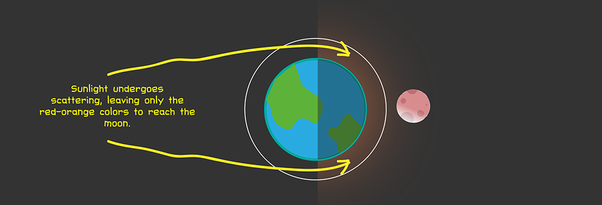If the eclipse happens during the day, surprisingly the moon does not become invisible. Instead, the moon appears to turn red.
The Earths atmosphere is much more transparent to red light - from one end of the visible spectrum - than blue and green - from the other. As a result blue and green light is absorbed and scattered in the atmosphere, while red light is more likely to pass through. It is also refracted, and some bounces off the moons surface, making the moon appear red. During the night, the sky appears dark, so we can see a relatively brighter moon.
